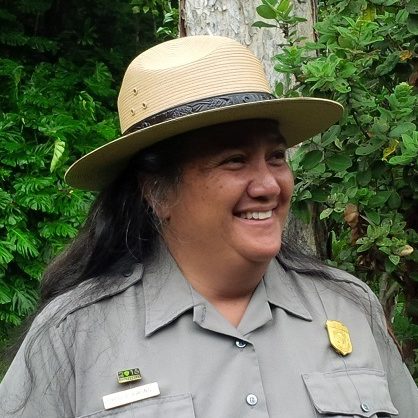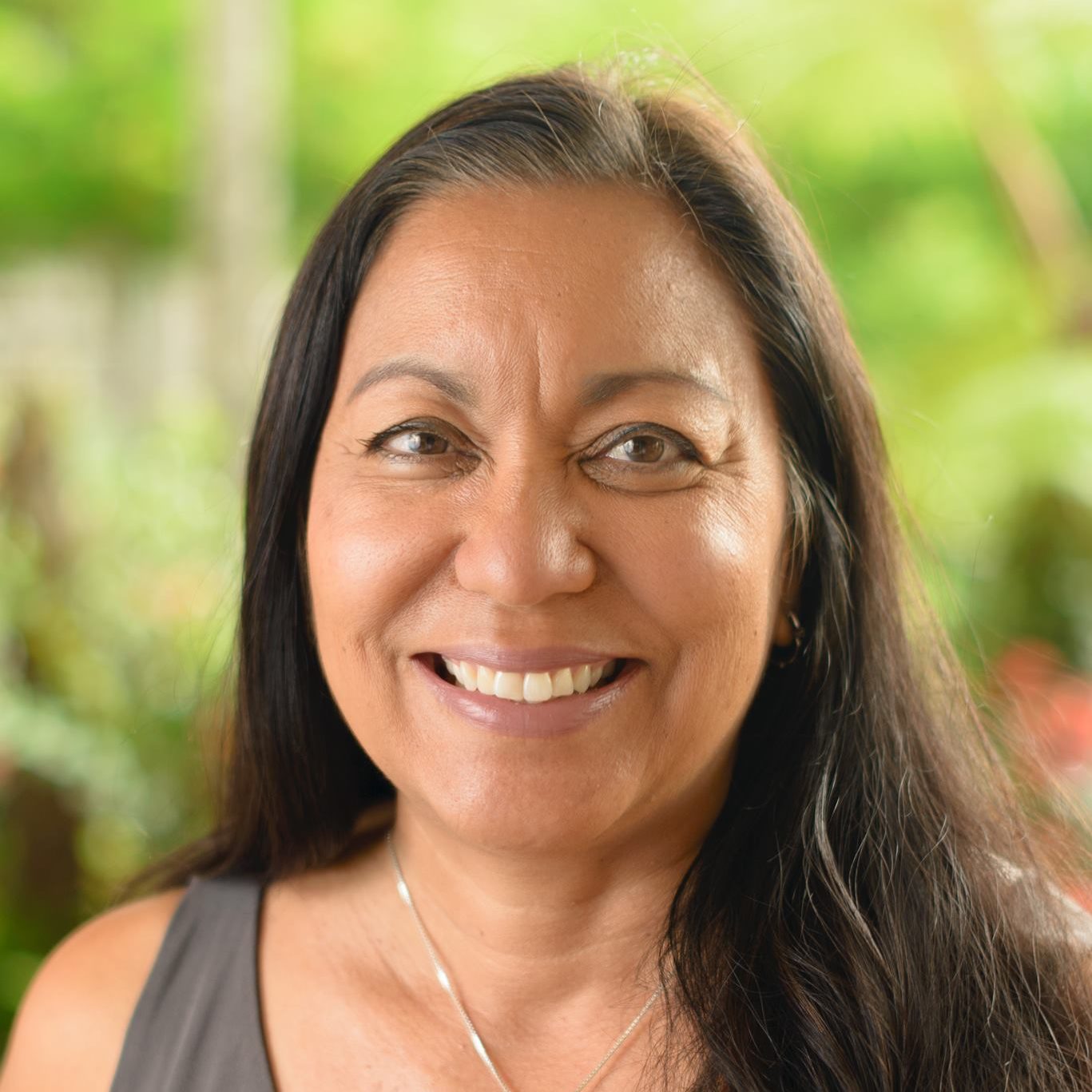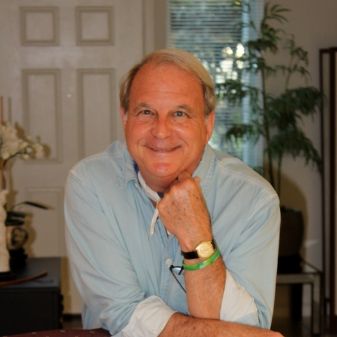MĀKAU MOʻOMEHEU
Cultural Competence in Hawaiʻi's Museums
What is cultural competency? And why is it important for those of us working in Hawaiʻi’s heritage sector? Join us as we talk about cultural competency as a framework for fostering meaningful relations between museum workers and the cultural practitioners that enrich our programs and institutions. These workshops include a panel on museum indigenization practices, as well as a talk-story with cultural practitioners across Ka Pae ʻĀina o Hawaiʻi about the challenges and opportunities of working with museums and related institutions.
Webinar/Workshop Speaker Bios
Below you will find bios for each of the speakers and organizers of these webinars/workshops. We will update this list as we continue to confirm speakers. We extend our gratitude to each of the practitioners participating in our programs for continuing to work with museums and for sharing their experiences with us. Mahalo a nui loa!
Hawaiʻi Island Speakers

ʻIliahi Anthony

Keola Awong
Chief of Interpretation and Education, Puʻuhonua o Hōnaunau National Historical Park
Keola Awong was born and raised on Moku O Keawe, Hawaiʻi Island. She is a graduate of Konawaena High School, and earned a BA in Anthropology with a minor in Hawaiian Studies from the University of Hawai‘i at Hilo. Awong also continued her education at the University of Hawaiʻi Mānoa, earning a Master’s degree in American Studies along graduate certificates in Museum Studies and Historic Preservation. She worked at Hawaii Volcanoes National Park in many different capacities from 1989-2018, and currently serves as the Chief of Interpretation and Education at Puʻuhonua o Hōnaunau and Kaloko-Honokōhau National Historical Parks.

Lynn Elia
Collections Manager & Registrar, Lyman House Memorial Museum

Mahealani Pai
Cultural Resource Specialist, Kamehameha Schools
Māhealani Pai is a cultural practitioner and serves as the Hawaiian Cultural Resource Specialist in West Hawaiʻi for Kamehameha Schools. He led the restoration efforts of 5 ancient Hawaiian temples in the Kahaluʻu ma kai ahupuaʻa. He holds his B.A. in Anthropology from the University of Hawaiʻi at Hilo and is currently pursuing his Master of Arts in Heritage Management from UH-Hilo.

Kahakaʻio Ravenscraft
Cultural Demonstrator, Puʻuhonua o Hōnaunau National Historical Park
Kahakaʻio Ravenscraft resides in the ahupuaʻa of Onouli in the South Kona district of the island of Hawaii. His genealogy connects the roots of his ʻohana deeply to the areas of Napoʻopoʻo, Keʻei, and Honaunau. In his passion for his culture, Kahakaʻio dedicates his time to the practices of kalai kiʻi (traditional sculpture), moʻokūʻauhau (keeping of genealogy), and the spiritual tradition of ritual and ceremony. Through multiple avenues, Kahakaʻio works closely with Puʻuhonua o Honaunau National Historical Park and also as an advocate for the awareness of cultural practices and traditions at Kealakekua Bay State Park. As a board member of Na Hoaaloha o ka Puʻuhonua o Honaunau, Kahakaʻio hopes to educate and inspire through the folklore and history of South Kona, Hawaii.

Noe Noe Wong-Wilson, PhD
Maui County Speakers

Keola Donaghy , PhD
Assistant Professor of Music, UH Maui College
Dr. Keola Donaghy is an Assistant Professor of Music and faculty coordinator of both Music Studies and the Institute of Hawaiian Music at University of Hawai‘i Maui College. He is a Nā Hōkū Hanohano Award-winning producer and composer whose compositions have been recorded by artists such as Keali‘i Reichel, Kenneth Makuakāne, Pandanus Club, Kainani Kahaunaele, Mailani Makainai, Amy Hānaiali‘i and Willie K., the De Lima ‘ohana, Steven Espaniola and others. Prior to joining UH Hilo he was a faculty member at Ka Haka ‘Ula O Ke‘elikōlani College of Hawaiian Language at UH Hilo, where he lead many technology-based initiatives including Ulukau – the Hawaiian Digital Library.

Kepā Maly
Executive Director, Lānaʻi Culture & Heritage Center
Kepā Maly was reared on the islands of O‘ahu and Lāna‘i. Hānai by the Kaopuiki ‘ohana on Lāna‘i as a teen, Kepā was immersed in Hawaiian cultural practices, language and values. Kepā’s career has focused in the field of cultural and natural resources, ethnography and the recording of Hawaiian history from Ni‘ihau through Hawai‘i and beyond. Maly adds to the knowledge that his elders shared with him. For the past four decades, he and his wife Onaona have been documenting the stories of people, places, and history of Hawai‘i.

Kaʻohulani McGuire
Cultural Anthropologist, Kalaupapa National Historical Park

Hōkūao Pellegrino

Mikiala Pescaia
Chief of Interpretation, Education, and Volunteers, Kalaupapa NHP
Mikiala has always worked to bridge information with people, places and things to create a space for indigenous leo Hawaiʻi to be heard in all realms of government, education and resource management. From creating programs for Bishop Museum Cultural Collections, to Nā Pua Noʻeau Center for Gifted and Talented Native Hawaiian Children, from Pūnana Leo o Molokaʻi to Ka Liʻi Mamo Video Production Academy, she has “taught” keiki to kupuna all kinds of things in a wide variety of programs. Currently, she serves as the Chief of Interpretation, Education and Volunteers at Kalaupapa National Historical Park. She also serves on the board of directors for Kanaeokana, as chair of the Molokai Planning Commission and the Molokai Island Burial Council, and is a commissioner on the Kahoʻolawe Island Reserve Commission. Mikiala has also served as executive director of Ka Ipu Makani Cultural Heritage Center and as Vice President of Ka Molokai Makahiki. She earned her Bachelors of Arts in Hawaiian Language in 2013 and is currently pursuing a Masters in Education – Curriculum Studies at UH Mānoa.
Kauaʻi Speakers

Chucky Boy Chock
Executive Director, Kauaʻi Museum

Sabra Kauka
Kumu of Hawaiian Studies and Hula, Island School & Hawaiian Studies Kaua’i Coordinator, Department of Education
Twenty years as a free-lance photojournalist working for publications such as Time, Life and National Geographic. Hawaiian Studies Kumu of Island School on Kaua‘i, Kumu Hula of Na Pua O Kamaile, Kaua‘i coordinator for the Department of Education’s Hawaiian Studies Kupuna Program, Kumu Kapa on Kaua‘i who has taught many hundreds of students & team members of the Kulia i Ka Nu‘u Project at the University of Hawai‘i at Mānoa. Founding member and Past-President of Na Pali Coast Ohana, a grassroots non-profit foundation dedicated to the preservation of the natural and cultural resources of the Nāpali Coast State Park, Kaua‘i Hawai‘i. Sabra serves on the Garden Island Resource Conservation and Development board and has worked tirelessly for years to restore and preserve culturally significant sites.

Aletha Kaohi

Keao Nesmith, PhD
Professor of Tahitian Language, University of Hawaiʻi at Mānoa
Dr Keao NeSmith was born and raised on Kaua‘i Island in Hawai‘i. Involved in several different fields of interest, Keao is engaged in research on and restoration of cultural sites on his home island as well as other places around Hawai‘i. Keao therefore dabbles in archeology as a hobby and participates in a variety of activities in his culture. He has translated and authored several books. Among his translations are Lewis Carroll’s Alice’s Adventures in Wonderland and Through the Looking Glass and What Alice Found There, J.R.R. Tolkien’s The Hobbit, J.K. Rowling’s Harry Potter and the Philosopher’s Stone, and L. Frank Baum’s The Wonderful Wizard of Oz from the original English into Hawaiian and Antoine de Saint-Exupéry’s Le Petit Prince (The Little Prince) from the original French into Hawaiian as well as a Hawai‘i Pidgin translation. With a PhD in applied linguistics (language teaching theory and practice) from the University of Waikato in New Zealand, Keao has taught Hawaiian language at various universities across the Pacific in Hawai‘i, Tahiti, New Zealand, and in Paris, France and he currently teaches Tahitian language at the University of Hawai‘i at Mānoa. But his primary occupation is research and consulting for various private and public entities in integrating Hawai‘i’s history and culture into their business practices and special projects.
Oʻahu Speakers

Noelle Kahanu, JD
Assistant Specialist in Public Humanities & Native Hawaiian Programs, Department of American Studies, University of Hawaiʻi at Mānoa

Earl Kawaʻa

Hanalei Marques Marzan
Cultural Resource Specialist, Bernice Pauahi Bishop Museum

Puakea Nogelmeier, PhD
Professor Emeritus of Hawaiian Language, University of Hawaiʻi at Mānoa
Puakea Nogelmeier is a professor of Hawaiian language at the University of Hawaiʻi at Mānoa, where he has taught for more than 30 years. His bachelor’s degrees in Hawaiian language and anthropology, MA in Pacific Islands studies and PhD in anthropology were all completed at UH Mānoa. Beyond the university, he trained for decades in learning Hawaiian language, traditional dance, chant and literature. Nogelmeier has undergone formal training and ceremonial graduation (ʻūniki) as both a dancer (ʻōlapa) and a teacher of dance (kumu hula). A prolific composer of Hawaiian poetry in both traditional and modern styles, his compositions are widely published and recorded. Nogelmeier works extensively with the various Hawaiian language archives and is active in rearticulating historical Hawaiian knowledge into fields of study today, producing translations, new presentations and reprintings of archival materials for publication and dissemination.
Cultural Competence Educators

Helen Wong Smith
Archivist for University Records, University of Hawaiʻi at Mānoa
Helen has over 35 years’ experience in library and archival collections in Hawaiʻi. With a B.A. in Hawaiian Studies and MLIS from the University of Hawai’i at Mānoa, she has held numerous positions including Hawaiian Collection Librarian at UH Hilo, lead archivist for the Pacific Island Network of the National Park Service and Librarian/Archivist for the State Historic Preservation Division.
Helen has been sharing how cultural competency can advance the archival profession since 2015 across the country including an invitation by Harvard University in November 2019. Elected president of Hawaiian Library Association, Hawaiian Historical Society and twice of the Association of Hawaiʻi Archivists she is the recipient of the Agnes C. Conrad award and named a Distinguished Fellow of the Society of American Archivists in 2016.

Tarisi Vunidilo, PhD
Assistant Professor of Anthropology, University of Hawaiʻi at Hilo
Tarisi Vunidilo has a MSc in Anthropology and a Postgraduate Diploma in Maori and Pacific Development, from the University of Waikato, Hamilton, New Zealand, a Postgraduate Diploma in Arts, majoring in Archaeology, Australian National University, Canberra, and a BA in Geography, History and Sociology, University of South Pacific, Suva, Fiji. She has published two books and several articles about Fijian pottery, language and archaeology. She was Programs Advisor, Pacific Arts, Creative New Zealand from 2007-2009; Collections Services Manager, Waikato Museum of Art & History from 2003-2007; Collection Manager (Registrar) of Pacific Collection at Tongarewa, Museum of New Zealand Te Papa from 2001-2003, and Director from 2000-2001 and Archaeologist and Head of the Archaeology Department from 1997-2000, and Graduate Trainee, Archaeology Department from 1994-1996 at the Fiji Museum. She is currently volunteering as Secretary-General for the Pacific Islands Museums Association (PIMA) and works between her office in Port Vila, Vanuatu and Hilo, Hawaii. She completed her Phd in Pacific Studies in January 2016- on the topic of “iYau Vakaviti-Fijian Treasures, Cultural Rights and Repatriation of Cultural Materials from International Museums”, at the Centre of Pacific Island Studies at the University of Auckland (New Zealand).

Halena Kapuni-Reynolds
Board Member, Hawaiʻi Museums Association
Halena Kapuni-Reynolds (Kanaka ʻŌiwi) is currently a Ph.D. student in American Studies and Museum Studies at the University of Hawaiʻi at Mānoa. He was raised in the Hawaiian homestead of Keaukaha on Hawaiʻi Island and has a B.A. in Anthropology and Hawaiian Studies (UH-Hilo, 2013) and an M.A. in anthropology with a focus in Museum and Heritage Studies (Uni. of Denver, 2015). His most recent publications include “Voyaging Through the Collection of The Denver Museum of Nature & Science” (Denver Museum of Nature & Science Annals, 2018) and “Nā Pana Kaulana o Keaukaha: The Storied Places of Keaukaha” in Detours: A Decolonial Guide to Hawaiʻi (Duke University Press, 2019). He currently sits on the board of directors for the International Institute for Indigenous Resource Management (Denver, CO) and the Hawaiʻi Museums Association (Honolulu, HI).
HMA Advisory Team

Teresa Valencia
President, Hawaiʻi Museums Association
Teresa is the Director of Curation and Education at ʻIolani Palace. She held various education, cultural resource management, research and outreach positions at the Maidu Museum & Historic Site, Asian Art Museum of San Francisco, Golden Gate National Parks Conservancy, and the California State Indian Museum. She earned a B.A. in Anthropology from The Ohio State University, and holds a M.A. and M.B.A., in Museum Studies dual-degree program, from John F. Kennedy University, CA. For her thesis, she wrote about the need for cultural competence in museums.

Lisa Solomine
Vice President, Hawaiʻi Museums Association
Lisa is Director of Administration at Hawaiian Mission Houses Historic Site and Archives. She has made Hawai‘i her home for the last seven years and is a native New Yorker with a background in exhibition design, curation, and arts management. Lisa has curated several exhibitions in New York City, Berlin, Wiesbaden, and London. Both her B.A. in Visual Communication, and M.F.A. in Exhibition Design/Design were awarded by Berlin University of the Arts, Germany.

Frank O. Hay
Treasurer, Hawaiʻi Museums Association
Frank has long been active as a volunteer and a trustee in museums. His experience includes volunteering at the Bishop Museum while an undergraduate in anthropology at UH Mānoa and, currently, for Hui o Laka and the Koke’e Natural History Museum, and the National Tropical Botanical Garden on Kauaʻi. Frank is a retired program manager for the US Navy. He is a graduate of ‘Iolani School, and has both undergraduate [BA] and graduate degrees [MBA] in Decision Sciences from the University of Hawaiʻi.
